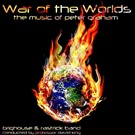We've found 281 matches for your search. Order by
Results
-
 £54.95
£54.95 -
 £44.60
£44.60WAR MARCH OF THE PRIESTS - Mendelssohn Felix - Littlehales Peter
Estimated dispatch 7-14 working days
-
 £24.60
£24.60WAR MARCH OF THE PRIESTS (Partitur/Score) - Mendelssohn Felix - Littlehales Peter
Estimated dispatch 7-14 working days
-
 £44.95
£44.95Battle (from War of the Worlds Suite) (Brass Band - Score and Parts) - Graham, Peter
!!
Estimated dispatch 7-14 working days
-
 £44.95
£44.95Phoenix (from War of the Worlds) (Brass Band - Score and Parts) - Graham, Peter
!!!!
Estimated dispatch 7-14 working days
-
 £20.00
£20.00 -
 £124.95
£124.95War of the Worlds (Brass Band - Score and Parts) - Graham, Peter
!!
Estimated dispatch 7-14 working days
-
 £44.95
£44.95Wrath (from War of the Worlds Suite) (Brass Band - Score and Parts) - Graham, Peter
!!
Estimated dispatch 7-14 working days
-
 £45.00
£45.00Mars, The Bringer of War - Gustav Holst arr. Phillip Littlemore
Estimated dispatch 5-7 working days
-
£20.00
War March of the Priests - Mendelssohn, F - Greenwood, JA
In Stock: Estimated dispatch 1-3 working days
